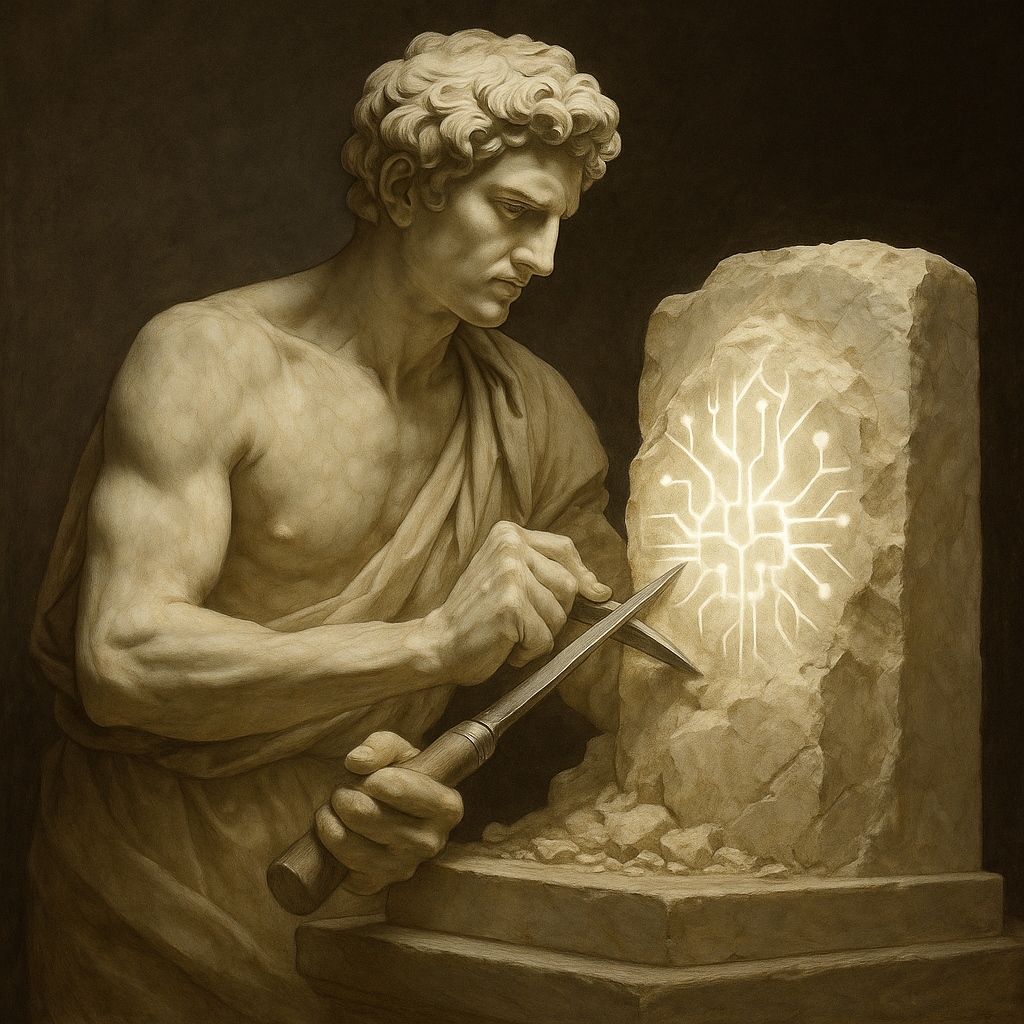Artificial Intelligence can accelerate almost anything — but not everything deserves to be accelerated.
Before investing in platforms, models, and integrations, there’s a crucial step that most organizations skip: exploration.
That’s where the Design Sprint becomes a strategic ally.
AI as an opportunity, not a race
In the current AI gold rush, many teams feel pressure to “do something with AI.”
But without a clear understanding of value, data, or impact, projects quickly become shiny experiments that never scale.
A Design Sprint reframes the question.
Instead of asking “What can AI do for us?”, the team explores “Where could intelligence truly create value?”
That shift changes everything.
From idea to insight in five days
A Sprint creates a structured, high-intensity moment to explore AI’s potential — without technical assumptions or endless debates.
In just a few days, teams can:
- Map the strategic and operational landscape.
- Identify high-value opportunities where AI could amplify capabilities.
- Prototype and test a concrete scenario — before writing a single line of code.
It’s a fast, collective way to validate what’s worth building, and what isn’t.
Mini-story: when AI met logistics
A distribution company wanted to automate inventory forecasting.
Instead of hiring consultants or buying new software, they ran a Sprint focused on understanding their real pain points.
They discovered the problem wasn’t prediction — it was communication.
Teams weren’t aligned on how to use the data they already had.
The solution wasn’t an algorithm.
It was a redesigned process that made intelligence usable.
The power of exploration
AI changes the logic of value creation.
But to use it strategically, organizations must learn to think in terms of capabilities, not tools.
A Sprint helps make that leap:
it turns complexity into clarity, ideas into insights, and uncertainty into measurable opportunity.
Because sometimes, the smartest investment is to stop and explore before building.
Metrics that matter
- Number of validated AI opportunities vs. discarded ideas.
- Speed of decision-making after exploration.
- Cross-functional alignment reached through the Sprint.
And after?
A Design Sprint isn’t the end of innovation — it’s the start of direction.
Once the real opportunities are clear, you can invest with confidence — in the right people, the right data, and the right technologies.
That’s how AI moves from curiosity to capability.
FAQ
Isn’t AI too technical for a Design Sprint?
Not at all. The Sprint focuses on understanding business needs and testing assumptions — long before the technical phase begins.
How do we choose the right challenge?
Pick a problem where intelligence (human or artificial) could create measurable value — not just efficiency.
What comes after the Sprint?
A roadmap of validated opportunities, ranked by impact, feasibility, and readiness. The foundation for a true AI strategy.
